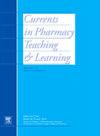Cultural competency in pharmacy education: Bringing the intangible to life through object-based learning
IF 1.3
Q3 EDUCATION, SCIENTIFIC DISCIPLINES
引用次数: 0
Abstract
Introduction
Cultural competence is a core professional skill that plays a key role for bridging health inequities among culturally and liniguisticallty diverse populaitons. However, student receptiveness and perceived relevance of content remains a challenge for integrating training in the earlier stages of the curriculum. This study describes the application and preliminary evaluation of object-based learning (OBL) as a pedagogical approach to stimulate student engagement with concepts of cultural competency among first year pharmacy undergraduates.
Methods
A bespoke OBL workshop was implemented in a unit of study with 320 first year undergraduate pharmacy students enrolled. Students worked in small teams of 5to–6 people, handling a curated collection of health-related art, specimens and artefacts across cultures in a 2-h workshop. Across three activities, students critically analysed the collection items.
Results
A total of 169 and 66 students responded to the baseline and post-workshop questionnaire respectively, giving rise to 46 matched pairs who were mostly female (63 %, n = 29) with a mean age of 18.93 (SD =1.36). Nearly half of the respondents self-identified as “Asian” with three quarters speaking a language other than English at home. Post-workshop changes were observed in students' ability to define cultural competence (Z = -2.236, p = 0.025) as well as their perceived levels of cultural competency advancing from “cultural pre-competency” to “cultural competency” (Z = −2.524, p = 0.012). At baseline, students endorsed a high level of agreement with respect to the importance of pharmacists providing culturally appropriate care and the relevance of cultural competence to their future pharmacy career, both of which remained unchanged post-workshop.
Conclusions
OBL is a promising approach to introducing concepts of cultural competency to a first year pharmacy student cohort. There is scope to expand OBL approaches in other areas of skill development in pharmacy education.
药学教育中的文化能力:通过基于对象的学习将无形的东西带入生活。
文化能力是一项核心专业技能,在弥合文化和语言不同人群之间的卫生不平等方面发挥着关键作用。然而,学生的接受能力和内容的感知相关性仍然是课程早期阶段整合培训的一个挑战。本研究描述了基于对象的学习(OBL)作为一种教学方法的应用和初步评估,以激发药学一年级本科生对文化能力概念的参与。方法:在320名药学本科一年级学生的研究单元中实施定制OBL研讨会。学生们以5到6人为小组,在2小时的工作坊中处理与健康相关的艺术品、标本和文物。在三个活动中,学生们批判性地分析了收集的项目。结果:共有169名学生和66名学生分别回答了基线问卷和工作坊后问卷,共产生46对配对,其中以女性为主(63%,n = 29),平均年龄为18.93岁(SD =1.36)。近一半的受访者认为自己是“亚洲人”,四分之三的人在家说英语以外的语言。工作坊结束后,学生对文化能力的定义发生了变化(Z = -2.236, p = 0.025),他们对文化能力的感知水平也从“文化前能力”上升到“文化能力”(Z = -2.524, p = 0.012)。在基线上,学生们对药剂师提供文化上适当的护理的重要性以及文化能力与他们未来的药学职业的相关性表示高度赞同,这两者在研讨会结束后都保持不变。结论:OBL是一种很有前途的方法,可以向药学一年级学生群体介绍文化能力的概念。在药学教育的技能发展的其他领域有扩展OBL方法的余地。
本文章由计算机程序翻译,如有差异,请以英文原文为准。
求助全文
约1分钟内获得全文
求助全文
来源期刊

Currents in Pharmacy Teaching and Learning
EDUCATION, SCIENTIFIC DISCIPLINES-
CiteScore
2.10
自引率
16.70%
发文量
192
 求助内容:
求助内容: 应助结果提醒方式:
应助结果提醒方式:


